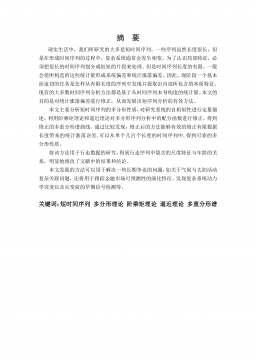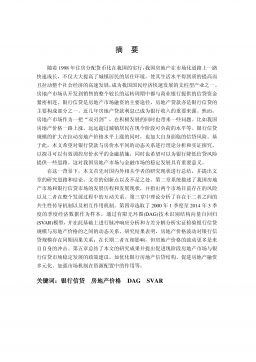分布式太阳能光伏光热组件与双源热泵一体化系统理论模拟与实验研究
VIP免费
摘要
全球能源短缺是目前威胁人类社会生存发展的重大问题。自人类进入工业社
会以来,化石能源的大量消耗导致传统能源的日益枯竭,展现在人类的眼前的是日
益严峻的能源危机。在一系列政策法规的支持下,近年来我国光伏产业发展迅猛。
在这种背景下,太阳能光伏光热与双源热泵一体化系统作为一种更为节能的系统,
需要有进一步的研究为其发展和推广做出探索。
首先,系统中使用双源热泵,存在水源热泵和空气源热泵运行模式的选择,优
化双源热泵的运行模式,就需要有一个衡量标准。我们知道机组在不同工况下的
COP 不具备可比性,但热力学完善度具有稳定性是可以进行比较的。不仅同种设备
不同工况下的热力学完善度可以进行比较,不同的设备具有相似的运行方式也是
可以进行比较的。本文对水源热泵和空气源热泵的热力完善度进行理论计算和比
较分析,分析结果显示,当周围空气干球温度比水源热泵蒸发器出水温度高 4℃以
上时,空气源热泵效率就会高于水源热泵效率,这种情况下可以优先考虑运行空气
源热泵。这为系统热泵运行情况的选择提供了理论支撑。
其次,依据 8-11 月份的实测数据,理论推出全年太阳能光伏光热与双源热泵
一体化系统的年发电量和系统得热量。依据发电量和得热量这两个主要参数分析
系统的节能效益和运行性能。开启双源热泵可以获得更高的发电量,同时热泵可以
将系统获得的无法直接使用的低温热水变成可以供人们洗浴等用途使用的生活热
水。因此,太阳能光伏光热与双源热泵一体化系统由于可以收集光伏板余热并经热
泵产生生活热水,同时一定程度上增加了系统的发电量,我们可以认为太阳能光伏
光热与双源热泵一体化系统具有较高的节能性和应用性。
再次,利用TRNSYS对系统进行建模,对系统进行模拟研究。模拟储热水箱体积
变化对系统的影响。分别选取300L、500L、700L三种水箱体积进行模拟,模拟结果
及分析显示储热水箱体积选择500L是科学合理的。模拟供热水箱体积变化对系统
的影响。分别选取100L、200L、300L三种水箱体积进行模拟,模拟结果及分析显示
供热水箱体积为200L是比较合理的。将模拟结果与实验数据进行对比分析,理论模
拟结果与实验数据供热水箱水温平均误差为8.75%,储热水箱水温平均误差为
12.18%。因此,可以认为本文的模拟结果具有比较高可信度,具有一定的参考价值。
最后,对实验数据进行整理分析,各工况下双源热泵模式运行结果均优于单水
源热泵模式和单空气源热泵模式。结合第二章中周围空气干球温度比水源热泵蒸
发器出水温度高4℃以上时,空气源热泵效率就会高于水源热泵效率的结论。可以
分析得到:不论是什么季节,随着一天中室外气温和太阳辐照度的变化,室外气温
和储热水箱水温的大小关系都不是绝对的。需要时时监测储热水箱水温和室外环
境温度,根据二者实时参数调整双源热泵开启模式达到最佳的节能运行,这才是最
佳的运行方式。
关键词:光伏光热 双源热泵 系统匹配 TRNSYS模拟
ABSTRACT
Currently, the global energy shortage is a major threat to the survival and
development of human society. Since entering the industrial society, when the large
consumption of fossil energy leads to the exhaustion of the traditional resources,
increasingly serious energy crisis show in front of the human. With the support of a series
of policies and regulations, photovoltaic industry in China develops rapidly in recent
years. In this context, integration of solar photovoltaic solar-thermal and double source
heat pump system as a kind of more efficient, there needs to be further research to explore
the development and promotion.
Firstly, the system used in the double source heat pump, has two operating modes ,
air source heat pump and water source heat pump. Then, a measure is needed to optimize
the mode of the double source heat pump. The COP of the unit under different conditions
have no comparability, but thermodynamics perfect degree can be compared because of
its stability. Not only the same equipment under different working conditions of
thermodynamics perfect degree can be compared, different devices with similar operation
mode also can be compared. This paper has carried on the theoretical calculation and
comparative analysis about thermodynamics perfect degree of air source heat pump and
water source heat pump. And the main results indicate that when the ambient air dry bulb
temperature is 4 ℃ higher than water source heat pump evaporator water temperature,
the efficiency of air source heat pump will be higher than that of water source heat pump,
thus, the air source heat pump can give priority to operation in this case. It provides a
theory system on the performance of the heat pump selection.
Secondly, based on measured data from August to November, the annual power
generation and heat gain of system of integration of solar photovoltaic solar-thermal and
double source heat pump system are deduced by using theory. According to the two main
parameters of generating capacity and heat gain, energy saving efficiency and the running
performance of the system are analyzed. Open the double source heat pump can obtain
higher output, while the heat pump can use the low temperature hot water which the
system cannot be used directly as domestic hot water that can be used to bathe. Due to
integration of solar photovoltaic solar-thermal and double source heat pump system can
collect photovoltaic panels of waste heat to produce domestic hot water, it simultaneously
improves generating capacity of the system to a certain extent. Then, it can be concluded
that integration of solar photovoltaic solar-thermal and double source heat pump system
has high energy and applied.
Moreover, the system is studied by simulation with TRNSYS. Choosing thermal
storage tank volume of 300 liters, 500 liters, 700 liters to simulate the influences to system
caused by the volume change of the thermal water storage tank, results and analysis are
obtained that thermal storage tank volume of 500 liters is a scientific and reasonable
choice. Choosing heating water tank volume of 100 liters, 200 liters, 300 liters to simulate
the influences to system caused by the volume change of the heating water tank, results
and analysis are obtained that heating water tank volume of 200 liters is more reasonable.
Compared simulation results with the experimental data, the average error of water
temperature in heating water tank is 8.75%, while the average error of water temperature
in thermal storage tank is12.18%. Thus, it can be concluded that simulation results have
higher credibility and a certain reference value.
Finally, through the analysis of the experimental data, the operation results under
each condition of the double source heat pump model are better than the single mode of
water source heat pump and the air source heat pump mode. Combined the conclusion
that when the ambient air dry bulb temperature is 4 ℃ higher than water source heat
pump evaporator water temperature, the efficiency of air source heat pump will be higher
than that of water source heat pump, it can be analysis that no matter what season it is,
with the change of the outdoor air temperature and solar irradiance in the day, the
relationships between outdoor temperature and the water temperature of heat storage
water tank are not absolute. It’s needed to constantly monitor the water temperature of
heat storage water tank and the outdoor environment temperature. And according to the
real-time parameter adjustment of source heat pump open mode to achieve the best
energy-saving operation, this is the best way to run.
Keywords: photovoltaic solar-thermal, double source heat pump, system
matching, TRNSYS simulation
目 录
摘要
ABSTRACT
第一章 绪论 .................................................................................................................................. 1
1.1 课题研究背景 ....................................................................................................................... 1
1.1.1 我国太阳能资源分布情况............................................................................................. 1
1.1.2 我国太阳能利用相关政策及太阳能产业发展现状 ..................................................... 3
1.2 分布式光伏光热与双源热泵一体化系统简介 .................................................................... 4
1.3 分布式光伏光热与双源热泵一体化系统应用研究现状 .................................................... 7
1.4 课题研究内容与目的 ........................................................................................................... 9
1.5 本章小结 ............................................................................................................................. 10
第二章 空气源热泵与水源热泵性能的理论比较 ..................................................................... 11
2.1 热泵的热力完善度 ............................................................................................................. 11
2.2 水源热泵与空气源热泵热力完善度比较 .......................................................................... 13
2.3 空气源热泵和水源热泵运行性能比较 .............................................................................. 15
2.4 空气源热泵和水源热泵性能理论计算的验证 .................................................................. 16
2.5 本章小结 ............................................................................................................................. 17
第三章 实验方案介绍................................................................................................................... 19
3.1 实验装置介绍 ..................................................................................................................... 19
3.2 实验系统电气控制系统及数据采集 .................................................................................. 22
3.2.1 电气控制系统 .............................................................................................................. 22
3.2.2 实验系统数据采集 ...................................................................................................... 23
3.3.3 实验室数据采集界面 ................................................................................................... 27
3.3 实验目的及内容 ................................................................................................................. 28
3.3.1 实验目的 ...................................................................................................................... 28
3.3.2 实验内容 ...................................................................................................................... 29
3.4 本章小结 ............................................................................................................................. 30
第四章 光伏光热与双源热泵一体化系统运行性能模拟 ........................................................... 31
4.1 TRNSYS 软件简介 ................................................................................................................. 31
4.1.1 光伏光热模块(Type50b)的数学模型 ...................................................................... 31
4.1.2 双源热泵模块(Type505a)的数学模型 .................................................................... 41
4.2 分布式光伏光热与双源热泵一体化系统 TENSYS 模拟 ..................................................... 44
4.2.1 季节性变化下系统运行情况的模拟 ........................................................................... 45
4.2.2 储热水箱大小的优化模拟........................................................................................... 49
4.2.3 供热水箱大小改变对系统的影响 ............................................................................... 51
4.3 本章小结 ............................................................................................................................. 54
第五章 光伏光热与双源热泵一体化系统实验数据分析 ........................................................... 55
5.1 光伏光热与双源热泵一体化系统可行性分析 ................................................................... 55
5.2 开启双源热泵模式和单独开启水源热泵模式运行效果对比分析 ................................... 56
5.3 开启双源热泵模式和单独开启空气源热泵模式运行效果对比分析 ............................... 59
5.4 实验与模拟的验证分析 ..................................................................................................... 61
5.5 小结 .................................................................................................................................... 61
第六章 结论与展望 ...................................................................................................................... 63
6.1 主要研究成果 ......................................................................................................................... 63
6.2 需要进一步开展的工作.......................................................................................................... 64
6.3 展望 ......................................................................................................................................... 64
参考文献 ........................................................................................................................................ 65
在读期间公开发表的论文和承担科研成果 ................................................................................. 68
致 谢 .............................................................................................................................................. 69
相关推荐
-
七年级数学下册(易错30题专练)(沪教版)-第13章 相交线 平行线(原卷版)VIP免费
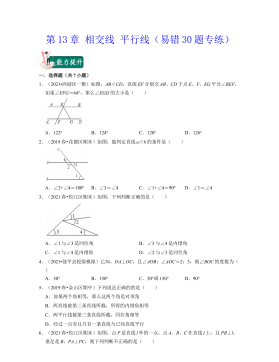
 2024-10-14 25
2024-10-14 25 -
七年级数学下册(易错30题专练)(沪教版)-第13章 相交线 平行线(解析版)VIP免费
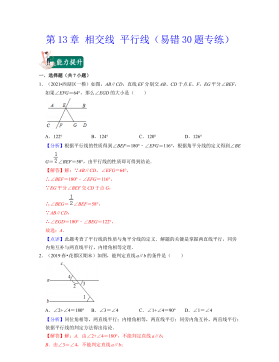
 2024-10-14 28
2024-10-14 28 -
七年级数学下册(易错30题专练)(沪教版)-第12章 实数(原卷版)VIP免费
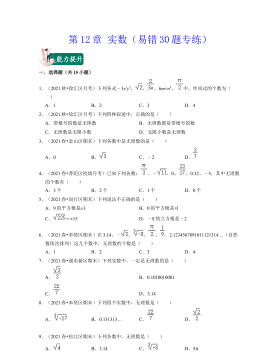
 2024-10-14 25
2024-10-14 25 -
七年级数学下册(易错30题专练)(沪教版)-第12章 实数(解析版)VIP免费
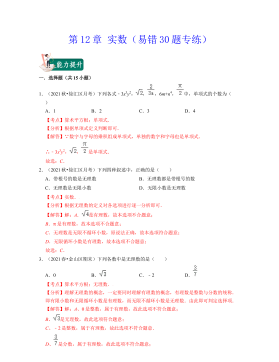
 2024-10-14 19
2024-10-14 19 -
七年级数学下册(压轴30题专练)(沪教版)-第15章平面直角坐标系(原卷版)VIP免费
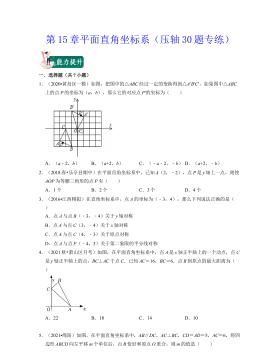
 2024-10-14 18
2024-10-14 18 -
七年级数学下册(压轴30题专练)(沪教版)-第15章平面直角坐标系(解析版)VIP免费

 2024-10-14 27
2024-10-14 27 -
七年级数学下册(压轴30题专练)(沪教版)-第14章三角形(原卷版)VIP免费

 2024-10-14 18
2024-10-14 18 -
七年级数学下册(压轴30题专练)(沪教版)-第14章三角形(解析版)VIP免费

 2024-10-14 30
2024-10-14 30 -
七年级数学下册(压轴30题专练)(沪教版)-第13章 相交线 平行线(原卷版)VIP免费
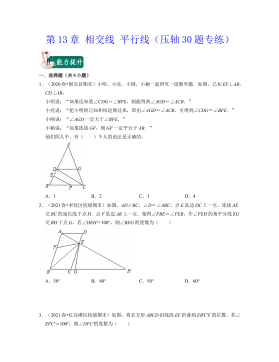
 2024-10-14 25
2024-10-14 25 -
七年级数学下册(压轴30题专练)(沪教版)-第13章 相交线 平行线(解析版)VIP免费
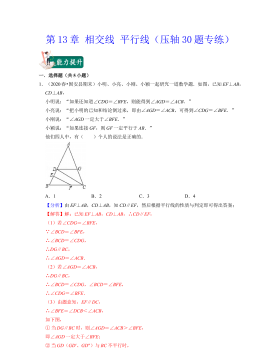
 2024-10-14 22
2024-10-14 22
作者:侯斌
分类:高等教育资料
价格:15积分
属性:73 页
大小:3.57MB
格式:PDF
时间:2025-01-09
相关内容
-

七年级数学下册(压轴30题专练)(沪教版)-第15章平面直角坐标系(原卷版)
分类:中小学教育资料
时间:2024-10-14
标签:无
格式:DOCX
价格:15 积分
-

七年级数学下册(压轴30题专练)(沪教版)-第15章平面直角坐标系(解析版)
分类:中小学教育资料
时间:2024-10-14
标签:无
格式:DOCX
价格:15 积分
-

七年级数学下册(压轴30题专练)(沪教版)-第14章三角形(原卷版)
分类:中小学教育资料
时间:2024-10-14
标签:无
格式:DOCX
价格:15 积分
-

七年级数学下册(压轴30题专练)(沪教版)-第14章三角形(解析版)
分类:中小学教育资料
时间:2024-10-14
标签:无
格式:DOCX
价格:15 积分
-

七年级数学下册(压轴30题专练)(沪教版)-第13章 相交线 平行线(原卷版)
分类:中小学教育资料
时间:2024-10-14
标签:无
格式:DOCX
价格:15 积分


